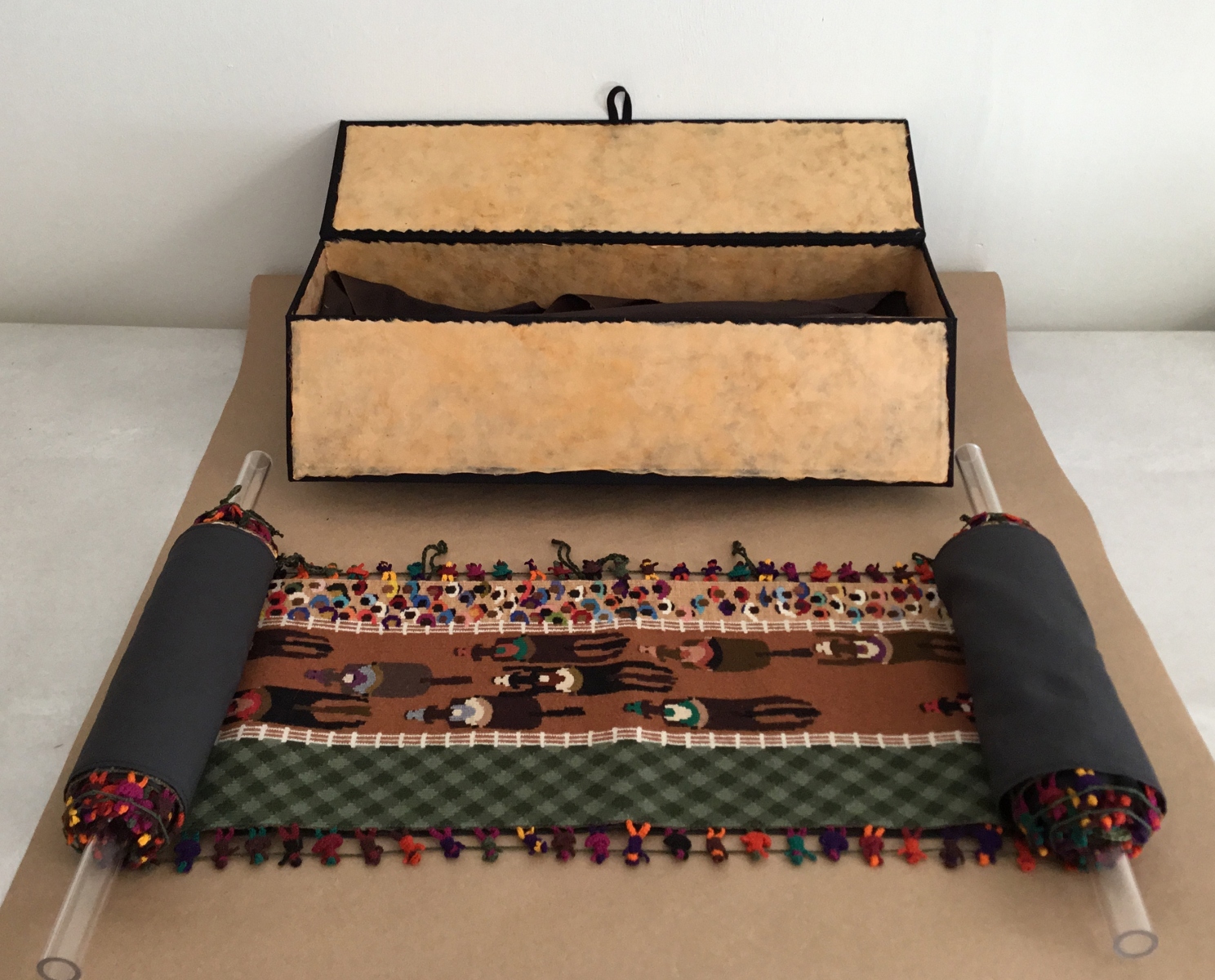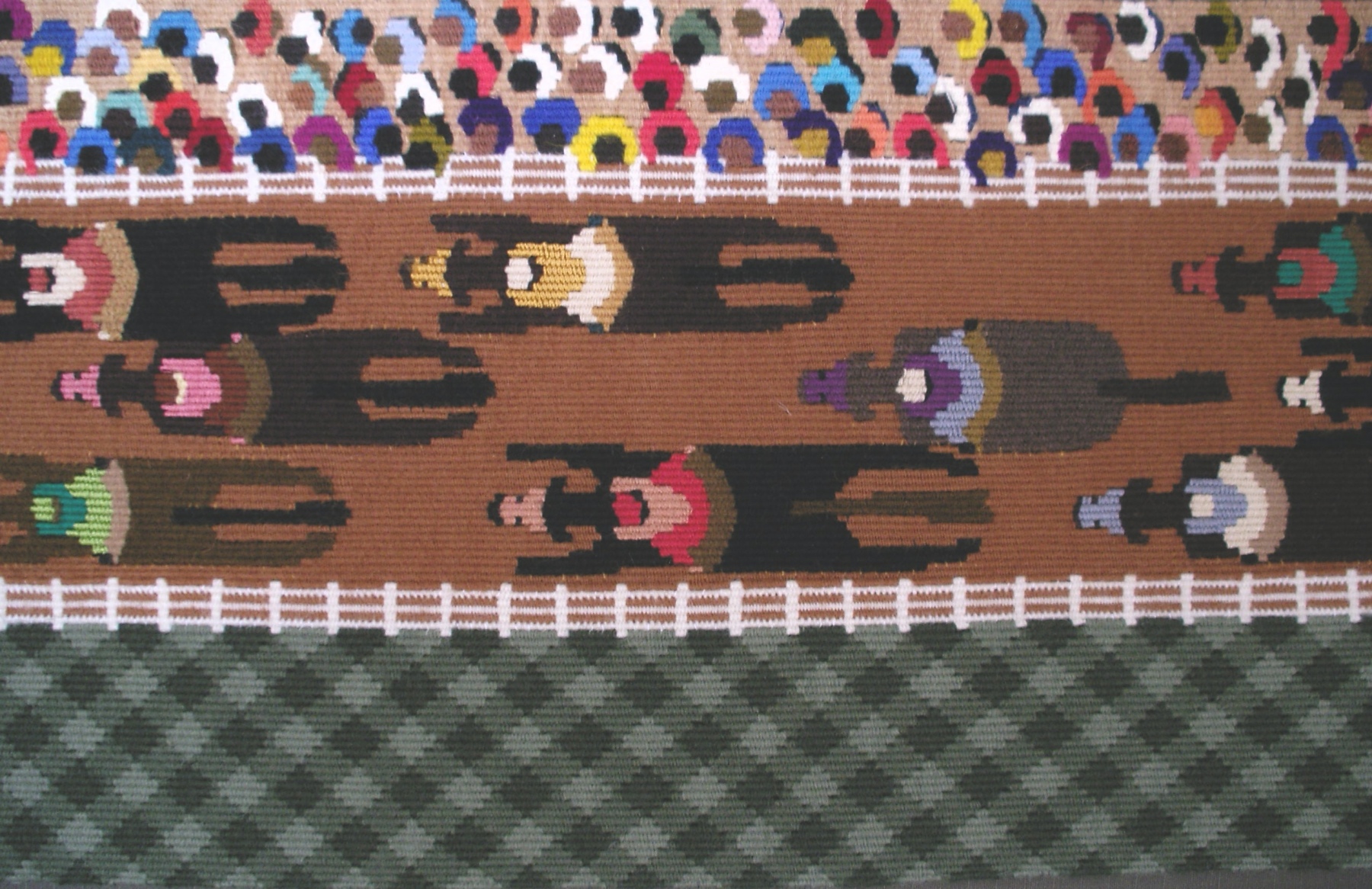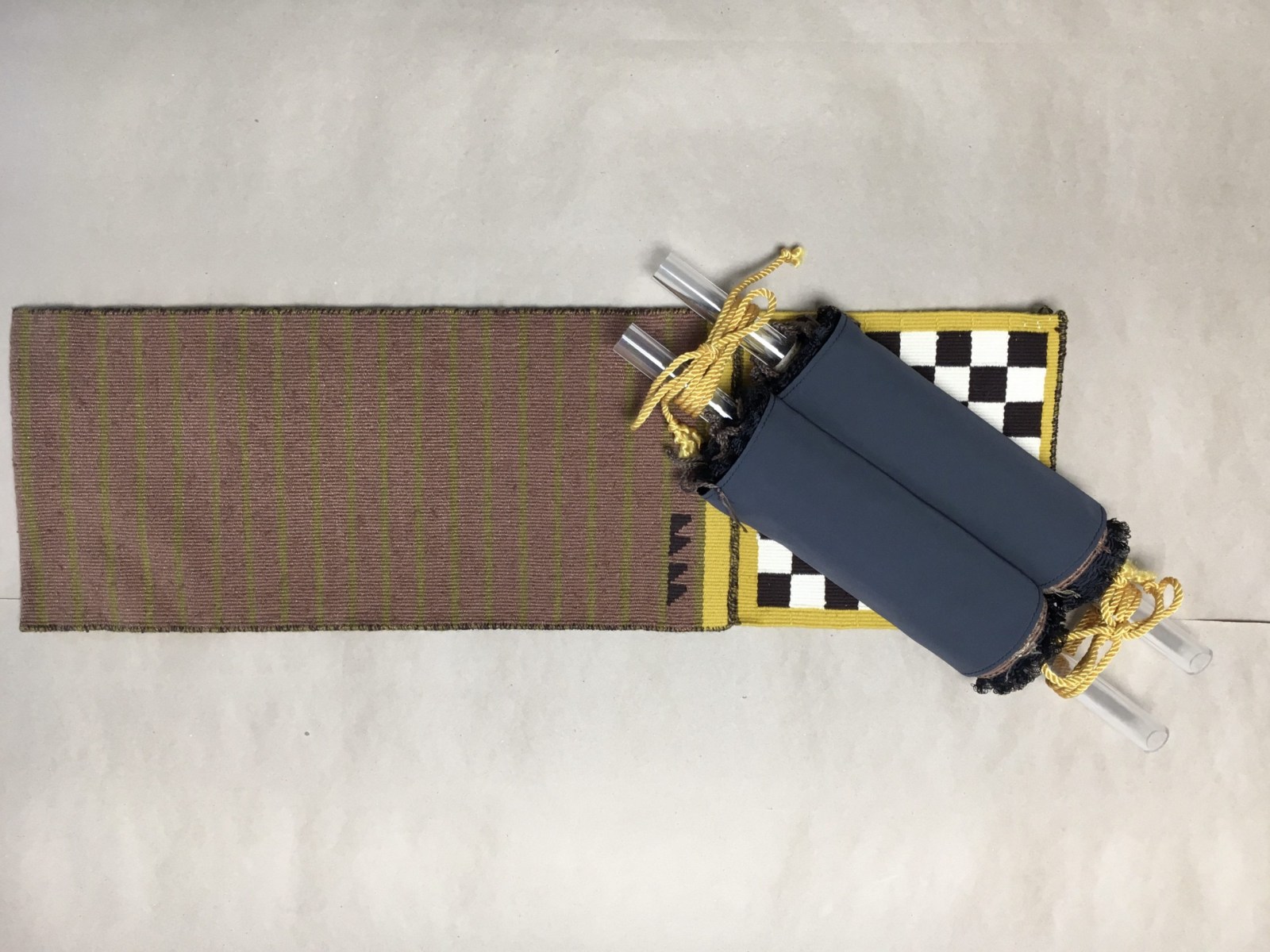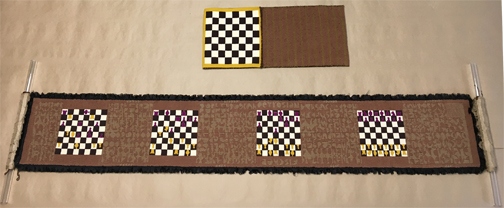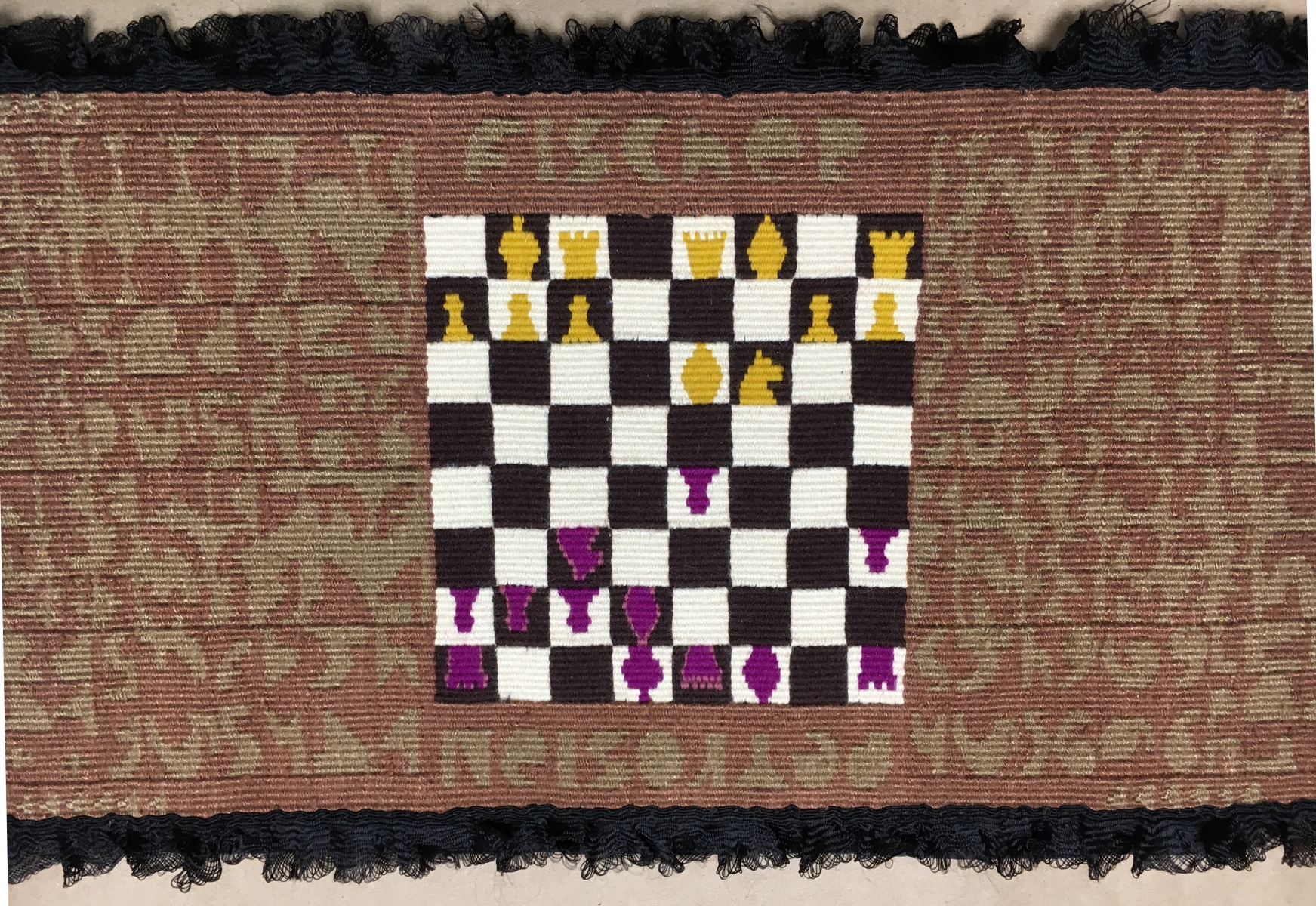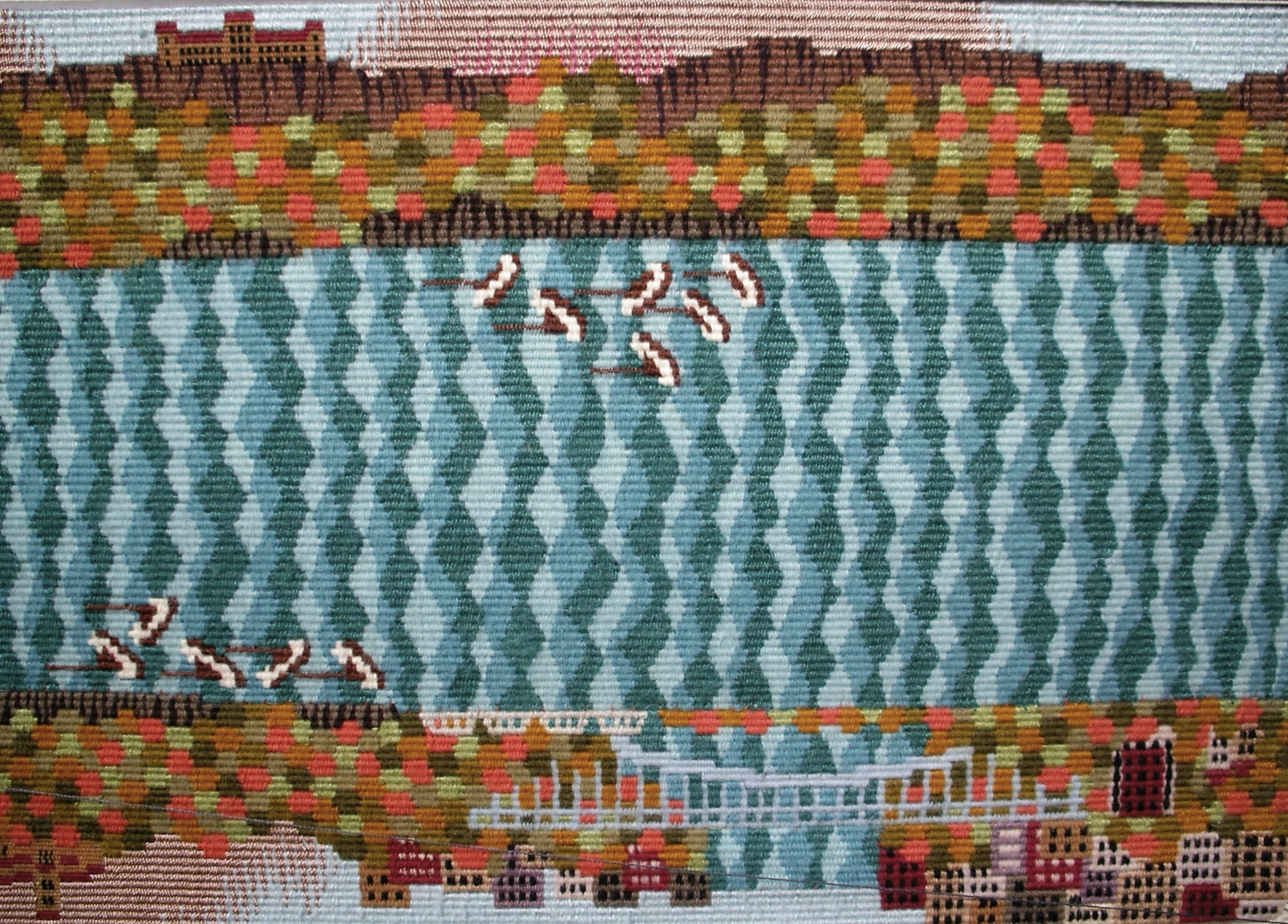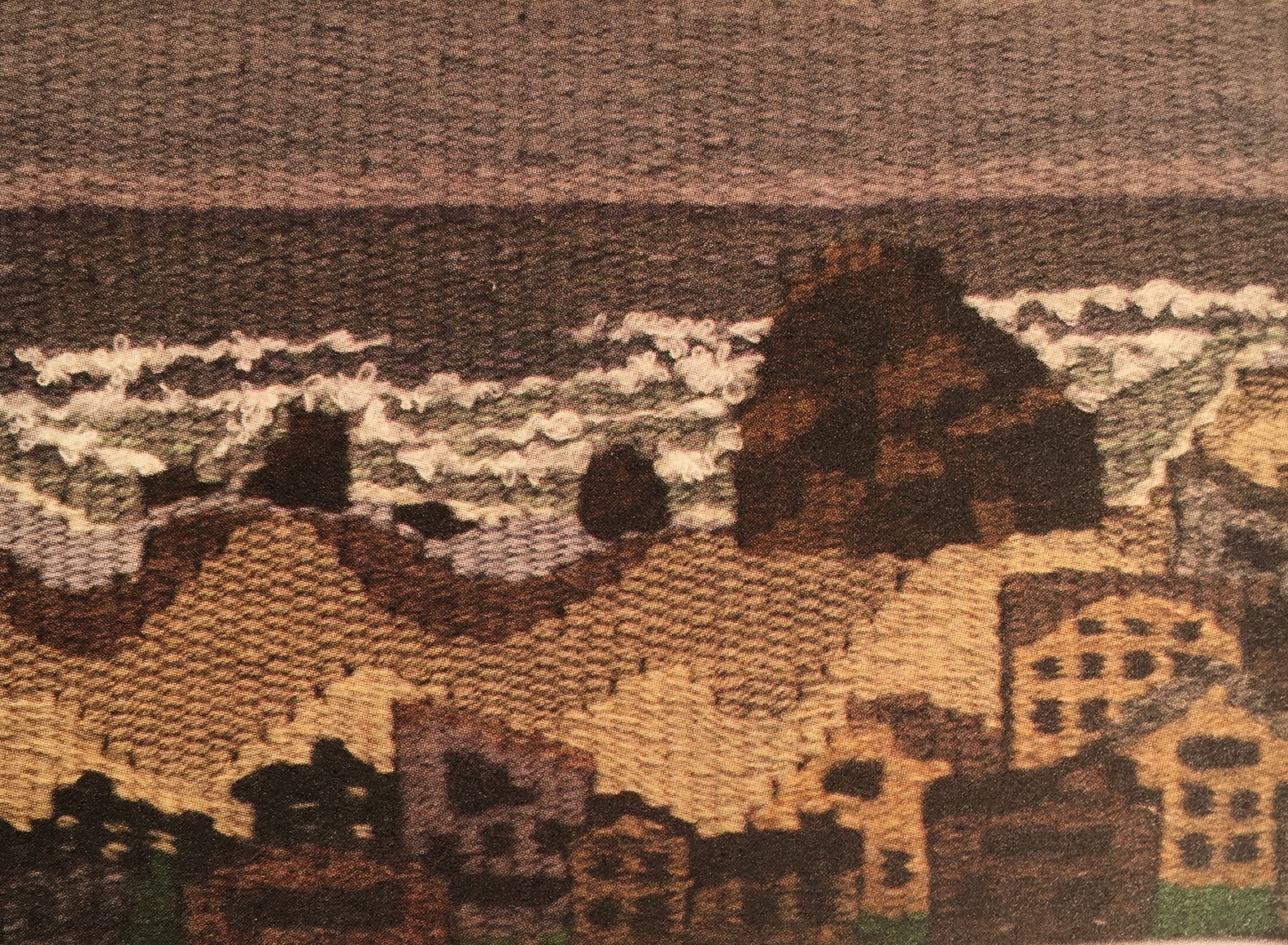Scrolls and Accordion Forms
The early history of tapestry making has always evoked a narrative of the surrounding world of human existence. This small set of woven tapestries has influences from many early cultures, in terms of textile language (or mark making), as well as textile forms and embellishments. As artists, we have not evolved, nor do we work in a vacuum, and as such we are all a product of past histories, personal ascetics and interests, and our environment. In the artists’ search for the development of his or her own personal language, an exploration of the history of art is one of the necessary ingredients in order to look to the future and it is in part through this process that we are able to discover and create anew.
One of the early forms of visual narrative was the textile scroll (paintings on silk and/or kesi weavings). It allowed verbal storytelling to be conveyed by image making. Early accordion book forms followed, evolving from the long-elaborated scrolls. Many of the attributes of these two ancient forms are still attractive today: the ability to roll or fold them (portability and/or storage) and options of reading them one section at a time (as in traditional usage) or, when expanded full length on a wall or in a cabinet (as in modern displays), to walk along the scroll and read it section by section as in a storyboard.
My preferred method of working spontaneously and freely on the loom, with no cartoon, lends itself particularly well to the scroll format and the narrative in both horizontal and vertical form. Woven tapestry requires that the weaver starts at one end and builds the tapestry shape by shape in a particular sequence and constant direction (bottom to top or side to side), much in the same way that one word follows another in oral or written storytelling. Weaving a tapestry without a preconceived design is therefore strongly related to the continuous conscious flow of rhythms and patterning evident in everyday language forms. It is this repetitive flow that attracts and anchors the music of the mark making with the completed visual of the work and that makes it relevant, satisfying and complete as textile art, whether ancient or contemporary.
How appropriate within these many connected factions of narrative language that these particular textiles now exist in in both hand-woven tapestry scroll and accordion book form and in some small way reflect not only an image of my surrounding world, but also echo a small piece of the relevant march of textile history.
Adapted from my essay written for “Narratives,” a limited-edition book of scroll form tapestries. 2010
Click on images to enlarge.
“Sport Series – Day at the Races“
9” x 79” plus crochet cotton trim, woven tapestry. Cotton warp; wool, cotton, linen, & silk weft. Scroll box, 20” x 5.5” x 5.5.” Book board, hand-made paper & book cloth.
“Sports Series – The Marathon”
10” x 73,” plus cotton crochet trim, woven tapestry scroll. Cotton warp; linen, cotton, wool & silk weft. Scroll box closed: 20” x 5.5” x 5.5,” book board, hand-made paper & book cloth.
“Sport Series – Tennis US Open”
12” x 65” plus cotton woven trim, woven tapestry scroll. Cotton warp; silk, rayon, wool, linen & cotton weft.
“Sicilian Defense”
12” x 65” with silk lace trim, woven tapestry scroll. Cotton warp; silk, rayon, wool & soy silk weft. Woven bag, 20” x 9” closed. Cotton warp; linen, soy silk & wool weft.
This tapestry records a chess game between Bobby Fisher and Tigran Petrosian using a strategy called Sicilian Defense. Two forms of notation record the moves of a chess game. The most common today is the Algebraic system. The board is notated by “a” thru “h” across the beginning playing side and “1” thru “8” for the vertical side. Each piece on the board has a symbol: K= king, Q=queen, R=rook, B=bishop and N=knight. The pawn is simply designated by its position on the board. The notation for capture is x and for checkmate is +. Other notations can indicate poor moves (? or ??) or brilliant moves (! or !!) as well as castling (0-0 or 0-0-0) and passant (e.p).
Each block of the tapestry’s background uses the notations of Fisher’s moves as a dark brown on light and for Petrosian a light brown on dark. The symbols in each block can be viewed from 3 different angles (horizontal, upside down, and sideways). This allows the tapestry to be hung in different ways. The game begins on the top left and continues in the first two columns to the right and then works its way back along the bottom two columns. The arrows on the borders help to show direction. Each chessboard shows an aspect of the game itself in visual form.
“Sicilian Defense “uses the form, patterning and colors often associated with African kubas. These beautiful skirts are a type of raffia woven cloth, originally used as a type of wrap around skirt for women. Patches to cover worn areas developed into a style of decorative geometric patterning and often some skirts have a ruffled edging.
“Golf, the 17th Hole”
10″ x 73.5,” woven tapestry. Cotton warp; wool, linen, cotton & silk weft.
“Sailing Down the Hudson”
12″ x 65,” woven tapestry scroll. Cotton warp; wool, linen, cotton & silk weft.
“Baynes Bay – Vancouver”
5″ x 65,” woven tapestry. Cotton warp; silk & wool weft; shell trim.
“Could These Be Purple Martins?”
4″ x 65,” woven tapestry. Cotton warp; linen & wool weft; crochet wool trim.
“Morning River”
12″ x 60,” woven tapestry. Cotton warp; wool, cotton & linen weft; cotton & wool crochet figures.
“Tolovana Beach Walk”
3.5″ x 57,” woven tapestry. Cotton warp; wool, linen & cotton weft.
“In the Wood in Inwood”
12″ x 65,” woven tapestry scroll. Cotton warp; wool, linen, cotton & silk weft.
Although tapestry maps are in general unusual, there is a minor history. Of particular interest in European tapestry is Sheldon Looms, credited as the earliest tapestry workshop in England. They produced four large maps of Worcestershire, Oxfordshire, Warwickshire and Berkshire dated 1588. No details are given of the surrounding counties and no roads are marked, although the roads do appear on the tapestry.
“In the Wood in Inwood” is a map of part of the small community in upper Manhattan where the I lived. It contrasts the beauty of the local park with the busy roads that abut it. Here it is impossible to get a parking space, but easy to find solace in the miles of hiking paths along the river.
“Reconstructing Wracraw,”
“Reconstructing Wracraw,” 12″ x 60,” woven tapestry. Cotton warp; wool, cotton & linen weft; cotton & wool crochet figures.



